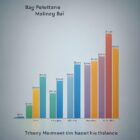15 Tips for Navigating Open Enrollment Healthcare Subsidies

Are you feeling overwhelmed by the process of navigating open enrollment healthcare subsidies? Don’t worry, we’ve got you covered!
In this article, we will provide you with 15 tips to help you successfully navigate through this complex system. From determining your eligibility to understanding income requirements, we will guide you every step of the way.
So grab a cup of coffee, sit back, and let’s dive into the world of open enrollment healthcare subsidies together!
Key Takeaways
- Understand the income requirements and eligibility criteria for healthcare subsidies
- Gather all necessary documents, including proof of income and residency, for the enrollment process
- Research and compare available healthcare plans to find the best coverage options and costs
- Utilize online platforms and healthcare navigators to simplify the enrollment process and maximize cost savings.
Determine Subsidy Eligibility
To determine your subsidy eligibility for open enrollment healthcare, start by reviewing your income and household size.
The first step is to calculate your Modified Adjusted Gross Income (MAGI), which includes various sources such as wages, self-employment income, and rental income. Be sure to include any additional sources of income, such as alimony or Social Security benefits.
Once you have your MAGI, compare it to the Federal Poverty Level (FPL) guidelines for your household size. These guidelines are updated annually and vary depending on the number of people in your household.
If your MAGI falls below the FPL threshold for your household size, you may be eligible for a subsidy.
The next step is to determine the percentage of the FPL that your MAGI represents. This will determine the amount of subsidy you may qualify for.
Keep in mind that the lower your income, the higher your subsidy will be.
It’s important to note that subsidy eligibility is also subject to other factors, such as immigration status and access to other affordable coverage options.
Understand Income Requirements
Understand the income requirements for open enrollment healthcare subsidies by reviewing your household’s Modified Adjusted Gross Income (MAGI) in comparison to the Federal Poverty Level (FPL) guidelines.
To determine your eligibility for healthcare subsidies, you need to calculate your MAGI, which includes your adjusted gross income (AGI) plus any tax-exempt income you may have. This can include sources such as Social Security benefits, tax-exempt interest, and foreign earned income.
Once you have calculated your MAGI, you can compare it to the FPL guidelines to determine if you qualify for subsidies. The FPL guidelines are set by the federal government and vary depending on your household size and location. It’s important to note that the guidelines change annually, so it’s crucial to stay updated.
If your MAGI falls below the FPL guidelines, you may qualify for subsidies to help lower the cost of your healthcare coverage. These subsidies can come in the form of premium tax credits, which reduce the amount you pay for your monthly health insurance premiums. Additionally, you may be eligible for cost-sharing reductions, which can lower your out-of-pocket expenses such as deductibles, copayments, and coinsurance.
Understanding the income requirements for open enrollment healthcare subsidies is essential in navigating the enrollment process. By reviewing your household’s MAGI in comparison to the FPL guidelines, you can determine if you qualify for subsidies and potentially save on your healthcare expenses.
Gather Necessary Documents
To ensure a smooth enrollment process and qualify for healthcare subsidies, you’ll need to gather the necessary documents.
The required paperwork for enrollment typically includes identification documents, proof of income, and proof of residency.
Additionally, it’s important to have a document checklist for subsidies, which may include tax returns, pay stubs, and proof of any other income sources.
Required Paperwork for Enrollment
Gather the necessary documents for enrollment by providing the required paperwork. To ensure a smooth enrollment process, make sure you have the following items ready:
- Personal identification: Bring a valid government-issued ID, such as a driver’s license or passport, to verify your identity.
- Proof of residency: Provide a document that shows your current address, such as a utility bill or lease agreement, to establish your residency.
- Social Security number: Have your Social Security card or a document that displays your SSN to verify your eligibility for healthcare subsidies.
- Income verification: Prepare documentation that proves your income, such as pay stubs or tax returns, as it determines your eligibility for healthcare subsidies.
Document Checklist for Subsidies
To ensure a smooth enrollment process, make sure you have all the necessary documents ready for subsidies by following this document checklist.
First, you’ll need proof of income, such as pay stubs or tax returns, to determine your eligibility for subsidies.
Additionally, you’ll need to provide proof of citizenship or legal residency, which can be in the form of a passport, birth certificate, or immigration papers.
Next, gather your Social Security number and the Social Security numbers of anyone else in your household who’ll be covered under the subsidies.
Finally, have your employer’s information on hand, including the Employer Identification Number (EIN) and contact details.
Research Available Healthcare Plans
To effectively research available healthcare plans during open enrollment, start by creating a plan comparison checklist. This will help you compare the different plans and their coverage options, deductibles, premiums, and out-of-pocket costs.
Additionally, it’s important to determine if you’re eligible for any subsidies or financial assistance to help lower your healthcare costs.
Plan Comparison Checklist
Before you begin researching available healthcare plans, create a plan comparison checklist. This will help you compare different plans side by side and make an informed decision.
Here are four items to include in your checklist:
- Coverage: Look at what services and treatments are covered by each plan. Consider your specific healthcare needs and make sure the plan covers them adequately.
- Cost: Compare the monthly premiums, deductibles, and copayments of each plan. Calculate how much you’ll have to pay out of pocket for different scenarios, such as doctor visits or hospital stays.
- Network: Check if your preferred doctors, hospitals, and specialists are included in the plan’s network. Going out of network may result in higher costs or limited coverage.
- Prescription drugs: Review the plan’s formulary to see if your medications are covered and at what cost. Consider any restrictions or prior authorization requirements.
Eligibility for Subsidies
To determine if you’re eligible for subsidies, research the available healthcare plans and assess their affordability and coverage options.
Start by visiting the healthcare marketplace website or contacting a licensed insurance agent to access information about the plans available in your area.
Look for plans that meet your healthcare needs and fit within your budget. Consider factors such as monthly premiums, deductibles, copayments, and coinsurance.
It’s important to compare the coverage options provided by each plan, including prescription drug coverage, preventive care, and specialist visits.
Additionally, make sure to check if your preferred doctors and hospitals are in-network for the plans you’re interested in.
Compare Plan Benefits and Costs
How can you effectively compare the benefits and costs of different healthcare plans during open enrollment? Here are four important factors to consider:
- Coverage: Carefully review the coverage details of each plan. Look for services that are important to you, such as prescription drugs, mental health, or preventive care. Make sure the plan covers the doctors and hospitals you prefer.
- Costs: Compare the costs associated with each plan. This includes the monthly premiums, deductibles, and copayments. Consider your healthcare needs and budget to determine which plan offers the most cost-effective option for you.
- Network: Check the network of doctors and hospitals associated with each plan. Are your preferred healthcare providers included? Choosing an in-network provider can help you save money on out-of-pocket expenses.
- Additional Benefits: Some plans offer additional benefits beyond basic coverage. Look for perks like telemedicine services, wellness programs, or discounts on gym memberships. These extras can provide added value and contribute to your overall healthcare experience.
Consider Your Healthcare Needs
Take into account your specific healthcare needs when evaluating different healthcare plans during open enrollment. It’s important to consider what kind of medical services you require on a regular basis. Are you someone who needs regular doctor visits and prescription medications? Or do you generally have good health and only need coverage for emergencies? Understanding your healthcare needs will help you choose a plan that provides the coverage you need at a price you can afford.
Start by making a list of your current healthcare needs. Consider any ongoing medical conditions or medications you take regularly. If you have a family, think about the healthcare needs of each family member. For example, do your children need pediatric care or dental coverage? Once you have a clear understanding of your needs, you can then compare the different plans available to you.
Look for plans that offer the specific coverage you require. Some plans may have limitations or exclusions that don’t align with your needs. Pay attention to the details of each plan, including the network of doctors and hospitals, prescription drug coverage, and any additional benefits like mental health services or maternity care.
Evaluate Network Coverage
Consider the network coverage of different healthcare plans to ensure that your preferred doctors and hospitals are included. Evaluating the network coverage is crucial in making an informed decision during open enrollment. Here are four key factors to consider:
- In-Network Providers: Check if your current doctors, specialists, and hospitals are included in the plan’s network. Verify that the plan offers access to the healthcare professionals and facilities you trust.
- Out-of-Network Coverage: Understand the extent of coverage for out-of-network providers. While in-network care is usually more cost-effective, emergencies or specific medical needs may require out-of-network services. Knowing the coverage limits and costs can help you make an informed decision.
- Referral Requirements: Some plans may require referrals from primary care physicians for specialist visits or certain medical procedures. Consider whether this additional step aligns with your healthcare preferences and needs.
- Telehealth Options: With the increasing popularity of telehealth services, check if the plan offers virtual doctor visits. This convenient option allows you to consult with healthcare providers remotely, saving time and reducing unnecessary in-person visits.
Evaluating network coverage will help you ensure that your preferred healthcare providers are included, giving you peace of mind knowing that you can receive quality care when you need it.
Review Prescription Drug Coverage
Assess your prescription drug coverage to ensure it meets your medication needs during open enrollment. Reviewing your prescription drug coverage is crucial to ensure that you have the right plan that meets your medication needs. Start by gathering all the information about your current prescription drug coverage, including the medications you take, the dosage, and the frequency.
Next, compare your medication list with the formulary, which is a list of drugs covered by your insurance plan. Check if your medications are included and determine if there are any restrictions or limitations, such as quantity limits or prior authorization requirements.
Consider the cost of your medications under your current plan. Look at the copayments, deductibles, and coinsurance amounts for each medication. Evaluate if the costs are affordable and if there are any opportunities for savings, such as mail-order or generic alternatives.
Additionally, review the pharmacy network associated with your prescription drug coverage. Ensure that your preferred pharmacy is included in the network to avoid any inconvenience or additional costs.
Finally, if you anticipate any changes in your medication needs for the upcoming year, make sure to consider those as well. If your current plan doesn’t adequately cover your anticipated medications, you may need to explore other options during open enrollment.
Assess Out-Of-Pocket Expenses
Evaluate your financial responsibility for healthcare expenses. Assessing your out-of-pocket expenses is crucial to understanding the potential costs you may incur while utilizing healthcare services. Here are four important factors to consider:
- Deductibles: Determine the amount you must pay before your insurance coverage kicks in. Higher deductibles often mean lower monthly premiums, but it also means you’ll have to pay more out of pocket before receiving coverage.
- Co-pays and Co-insurance: These are the costs you pay when receiving medical services or medications. Co-pays are fixed amounts, while co-insurance is a percentage of the total cost. It’s important to know how much you’ll be responsible for and if there are any limits or caps.
- Maximum Out-of-Pocket Limit: This is the maximum amount you’ll have to pay for covered services in a year. Once you reach this limit, your insurance will cover all remaining costs. Understanding this limit can help you plan and budget for potential expenses.
- Prescription Drug Costs: Assess the costs of medications you regularly take. Check if your insurance plan covers them and if there are any restrictions or limitations on coverage.
Explore Additional Subsidies or Assistance Programs
To further explore available subsidies or assistance programs, assess whether you qualify for additional financial support based on your healthcare expenses. In addition to the standard healthcare subsidies provided through open enrollment, there may be other programs that can help alleviate the burden of healthcare costs.
One option to consider is Medicaid, a joint federal and state program that provides health coverage to low-income individuals and families. Eligibility requirements vary by state, but generally, individuals with limited income and resources may qualify for Medicaid. This program can provide comprehensive coverage at little to no cost.
Another option is the Children’s Health Insurance Program (CHIP), which provides low-cost or free health coverage for children in low-income families. Eligibility for CHIP is generally based on income, and each state has its own specific requirements. This program can be a valuable resource for families who need affordable healthcare options for their children.
Additionally, some states offer additional assistance programs, such as premium assistance or cost-sharing reductions, that can help lower the cost of healthcare coverage. These programs are designed to provide financial support to individuals and families who may struggle to afford their healthcare expenses.
Utilize Online Tools and Resources
Take advantage of online tools and resources to simplify your open enrollment healthcare subsidy process. These tools can provide you with valuable information and assistance when it comes to understanding your options and making informed decisions.
Here are four ways you can utilize online tools and resources to navigate your healthcare subsidies:
- Use subsidy calculators: Online subsidy calculators can help you estimate the financial assistance you may qualify for based on your income and family size. By entering your information, you can get an idea of the subsidies available to you and how they can help reduce the cost of your healthcare coverage.
- Compare plans and prices: Online marketplaces and insurance websites allow you to compare different healthcare plans and their prices side by side. This makes it easier to evaluate your options and choose a plan that meets your needs and budget.
- Access educational materials: Many websites offer educational materials, such as articles, videos, and FAQs, that can help you understand the complexities of healthcare subsidies. These resources can provide you with the knowledge you need to make informed decisions and navigate the enrollment process more effectively.
- Seek assistance through chat or helpline: Some online platforms offer chat support or helplines where you can speak to experts who can answer your questions and provide personalized guidance. Utilizing these resources can help you address any specific concerns or uncertainties you may have.
Seek Guidance From a Healthcare Navigator
When it comes to navigating open enrollment healthcare subsidies, seeking guidance from a healthcare navigator can be invaluable. These experts can provide you with advice on how to maximize your healthcare cost savings and simplify the open enrollment process.
With their help, you can ensure that you’re making the most informed decisions regarding your healthcare coverage.
Expert Advice on Subsidies
Seek guidance from a healthcare navigator for expert advice on navigating open enrollment healthcare subsidies. These professionals are trained to help individuals understand the complexities of healthcare subsidies and find the best options for their specific needs.
Here are four reasons why seeking guidance from a healthcare navigator is crucial:
- Expertise: Healthcare navigators have extensive knowledge of the healthcare system and can provide valuable insights on subsidies, eligibility requirements, and available plans.
- Personalized Assistance: Navigating through the various subsidy options can be overwhelming. A healthcare navigator can assess your unique situation and guide you towards the subsidies that are most beneficial for you.
- Cost Savings: By seeking guidance from a healthcare navigator, you can maximize your subsidy benefits and potentially save money on your healthcare costs.
- Avoiding Mistakes: Applying for healthcare subsidies involves complex paperwork and understanding specific guidelines. A healthcare navigator can ensure that you complete the necessary forms accurately, helping you avoid costly mistakes.
With their expertise and personalized assistance, healthcare navigators can help you make informed decisions and take full advantage of the subsidies available to you during open enrollment.
Simplify Open Enrollment Process
Maximize your open enrollment experience by consulting with a healthcare navigator to simplify the process. A healthcare navigator is a professional who can guide you through the complexities of open enrollment and help you make informed decisions about your healthcare coverage. They are knowledgeable about the available options, eligibility requirements, and subsidy programs. By seeking their guidance, you can save time, reduce stress, and ensure that you choose the best plan that meets your needs and budget. To give you an idea of the benefits of working with a healthcare navigator, here is a table showcasing the advantages of their expertise:
| Advantages of Working with a Healthcare Navigator |
|---|
| 1. Expert guidance on available healthcare plans |
| 2. Assistance with eligibility requirements |
| 3. Help in understanding subsidy programs |
| 4. Personalized recommendations based on your needs |
Maximize Healthcare Cost Savings
To further simplify the open enrollment process and ensure you maximize healthcare cost savings, continue consulting with a healthcare navigator who can guide you through the complexities and provide expert guidance on available healthcare plans.
Here are four ways a healthcare navigator can help you maximize your healthcare cost savings:
- Evaluate your healthcare needs: A healthcare navigator will assess your specific healthcare needs and help you select a plan that provides the coverage you require, while minimizing unnecessary costs.
- Identify eligible subsidies: Healthcare navigators are knowledgeable about available subsidies and can determine if you qualify for financial assistance. They’ll help you navigate the application process and ensure you receive the maximum subsidy you’re entitled to.
- Compare plans and costs: Healthcare navigators have access to tools and resources that allow them to compare different healthcare plans and costs. They’ll help you find the most cost-effective plan that still meets your healthcare needs.
- Assist with enrollment: Healthcare navigators can guide you through the enrollment process, making sure you understand the paperwork and deadlines. They’ll help you complete the necessary forms accurately and efficiently.
Ask Questions and Clarify Doubts
If you have any uncertainties or concerns regarding your healthcare subsidies, it is crucial to raise questions and seek clarification during the open enrollment period. This is the time to gather all the information you need to make informed decisions about your healthcare coverage. Asking the right questions can help you understand your options better and ensure that you are getting the most out of your subsidies.
To help you get started, here are some important questions to ask your healthcare provider or insurance company:
| Questions to Ask | Explanation |
|---|---|
| What subsidies am I eligible for? | Understanding the subsidies available to you can help you determine the level of financial assistance you can receive. |
| How do I qualify for these subsidies? | Knowing the eligibility criteria can ensure that you meet the requirements and can access the subsidies you need. |
| What is the application process for subsidies? | Understanding the application process can help you navigate through the necessary steps to receive your subsidies. |
| How long will it take to receive the subsidies? | Knowing the timeline for receiving your subsidies can help you plan your healthcare expenses accordingly. |
| Are there any changes to the subsidy program this year? | Staying updated on any changes to the subsidy program can help you make informed decisions during the open enrollment period. |
Don’t Miss the Open Enrollment Deadline
Don’t wait until the last minute to enroll in your healthcare plan! Missing the open enrollment deadline can have serious consequences, including being uninsured for a period of time and potentially facing financial penalties.
To avoid delays, make sure to mark the enrollment period on your calendar, gather all necessary documents ahead of time, and be proactive in reaching out to your healthcare provider for any questions or concerns.
Importance of Timely Enrollment
Ensure you don’t miss the open enrollment deadline by submitting your enrollment form on time. Timely enrollment is crucial for securing the healthcare coverage you need.
Here are four reasons why it’s important to enroll on time:
- Avoid Penalties: Missing the open enrollment deadline may result in penalties or fines. By enrolling on time, you can avoid these additional costs.
- Continuous Coverage: Timely enrollment ensures that you have uninterrupted healthcare coverage. Delaying enrollment could leave you without coverage for a period, putting your health at risk.
- Access to Benefits: Enrolling on time allows you to access the full range of benefits offered by your healthcare plan. Don’t miss out on important services and features that can benefit your health and well-being.
- Peace of Mind: By enrolling on time, you can have peace of mind knowing that you have taken the necessary steps to protect your health and financial well-being.
Don’t wait until it’s too late. Submit your enrollment form on time to secure the healthcare coverage you deserve.
Consequences of Missed Deadline
Missing the open enrollment deadline can have serious consequences for your healthcare coverage. It’s important to understand the potential impacts and take action to avoid them.
One consequence of missing the deadline is that you may not be able to enroll in a health insurance plan until the next open enrollment period, which could leave you without coverage for an extended period of time. This means you’d be responsible for paying for all of your healthcare expenses out of pocket.
Additionally, if you miss the deadline and don’t qualify for a special enrollment period, you may face a penalty when you file your taxes.
It’s crucial to mark the open enrollment period on your calendar and make sure you submit your application on time to avoid these negative consequences.
Tips for Avoiding Delays
To avoid potential delays and ensure timely enrollment, it’s important to take proactive steps during the open enrollment period. Here are four tips to help you avoid any delays and ensure a smooth enrollment process:
- Mark your calendar: Make sure you know the exact dates of the open enrollment period for your healthcare plan. Set reminders to ensure you don’t miss the deadline.
- Gather necessary documents: Before the enrollment period begins, gather all the necessary documents and information you’ll need to complete the enrollment process. This may include personal identification, social security numbers, and income verification documents.
- Research your options: Take the time to research different healthcare plans and compare their coverage and costs. This will help you make an informed decision and avoid any last-minute confusion.
- Seek assistance if needed: If you have any questions or need help navigating the enrollment process, don’t hesitate to reach out to your employer’s human resources department or a healthcare navigator. They can provide guidance and ensure you complete the process correctly and on time.
Review and Update Your Plan Annually
Make sure you review and update your healthcare plan annually. It is important to regularly assess your healthcare needs and make any necessary adjustments to ensure that you have the right coverage for the upcoming year. By reviewing and updating your plan annually, you can take advantage of any changes in your health condition, lifestyle, or financial situation.
To help you with the process, here is a table that outlines some key factors to consider when reviewing and updating your healthcare plan:
| Factors to Consider | Questions to Ask Yourself |
|---|---|
| Health Needs | Have there been any changes in your health condition or medication? |
| Provider Network | Are your preferred doctors and hospitals still in-network? |
| Prescription Drugs | Are your current medications covered by your plan? |
| Cost | Are you satisfied with the cost of premiums, deductibles, and co-pays? |
| Health Savings | Are you taking full advantage of any health savings accounts or employer contributions? |
Frequently Asked Questions
How Do I Determine if My Employer Offers Healthcare Subsidies During Open Enrollment?
To determine if your employer offers healthcare subsidies during open enrollment, review your employee benefits package or speak with your HR department. They can provide information on available subsidies and how to apply.
Can I Still Receive Healthcare Subsidies if My Income Fluctuates Throughout the Year?
Yes, you can still receive healthcare subsidies if your income fluctuates throughout the year. These subsidies are based on your estimated income for the year, so if it changes, you may be eligible for more or less assistance.
Are There Any Special Circumstances That May Make Me Eligible for Additional Healthcare Subsidies?
If you have special circumstances, such as a change in income, family size, or a qualifying life event, you may be eligible for additional healthcare subsidies. It’s important to review your options during open enrollment.
What Online Tools or Resources Are Available to Help Me Navigate the Open Enrollment Process?
Check out online tools like healthcare.gov and your state’s marketplace website for information on navigating open enrollment. They provide helpful resources to guide you through the process and make informed decisions about your healthcare coverage.
What Should I Do if I Miss the Open Enrollment Deadline?
If you miss the open enrollment deadline, don’t panic. You can still get coverage through a Special Enrollment Period. Qualifying life events like getting married or losing job-based coverage can make you eligible.



